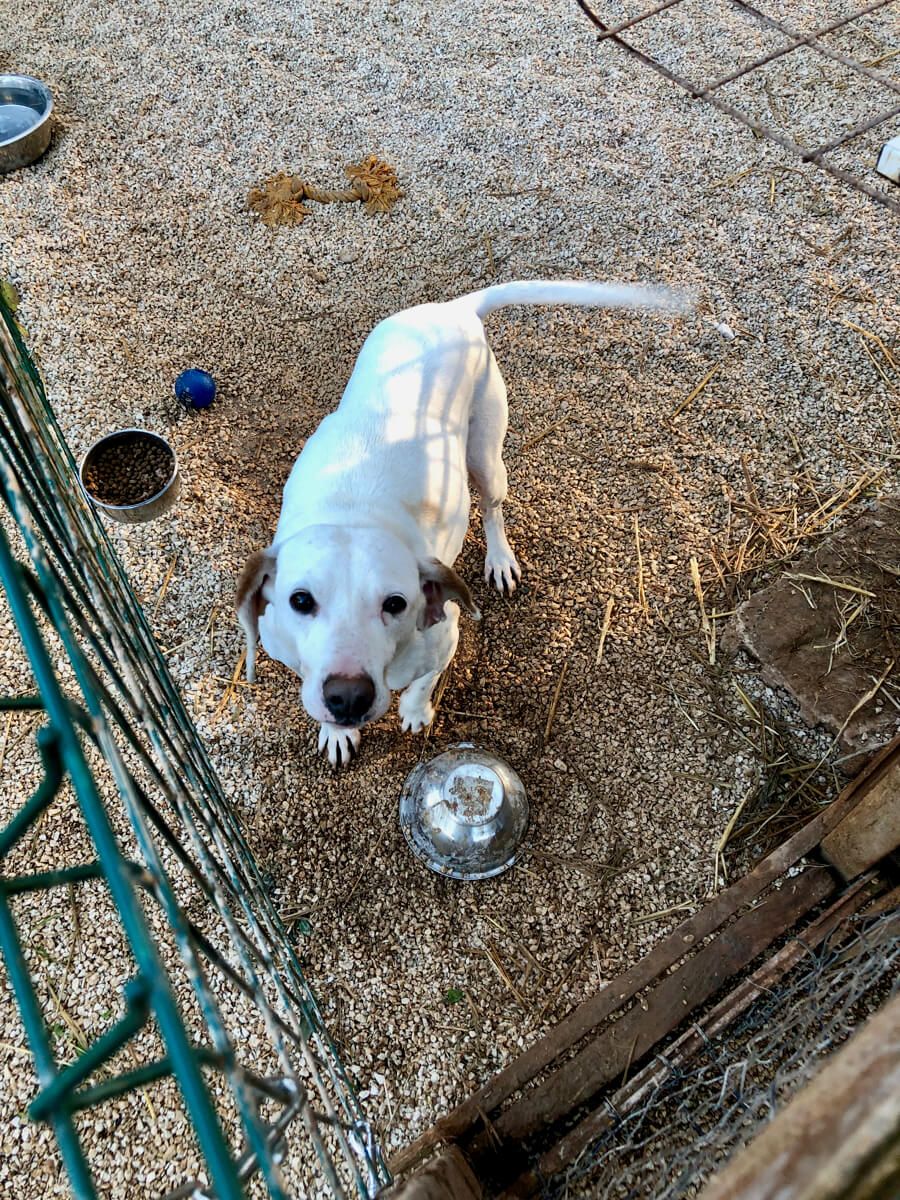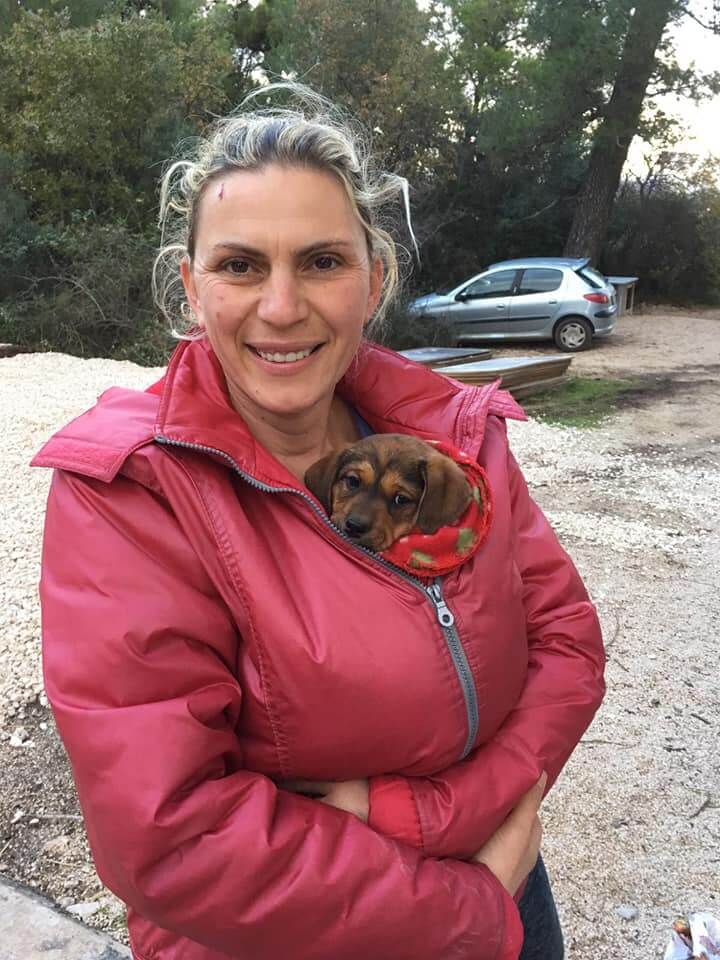Old Painting Confirms Dalmatian Breed is Croatian Dog
May the 26th, 2021 - The beloved Dalmatian breed is popular all over the world, having been the star of famous films and regularly appearing as a fire house dog in the USA. Despite its name pointing directly to its place of origin, many still don't realise that Croatia's Dalmatian coast is the origin of this much loved dog breed. One Croatian vicar from Makarska believes he has substantial proof that the spotty, clownish and friendly Dalmatian truly did originate on these shores.
As Morski/HTV/Dnevnik/Ivica Djuzel writes, in beautiful little Zaostrog in Central Dalmatia, they decided to further brand their rich cultural heritage. In the monastery of St. Mary, where the great folk poet Andrija Kacic Miosic spent part of his creative life, hangs a painting with the motif of the last supper from the 18th century. On the floor lies a dog which closely resembles the Dalmatian breed as we know it today. To most, this is proof that the famous Dalmatian breed is definitely an autochthonous Croatian breed.
Various treasures have been kept in the monastery of St. Mary in Zaostrog for centuries, and the great Fr. Andrija Kacic Miosic also created works there. For a long time, these invaluable pictures were hidden away from the public and prying eyes. Then the media got involved in the saga.
''One night someone rings the bell. I come down, to find two young Japanese people saying they'd like to see a picture. I asked them if they wanted to see the whole convent. They replied that they were only interested in the picture,'' Fr. Branko Brnas, the vicar of the Franciscan monastery, begins when in conversation with HRT.
Inside hangs the aforementioned painting with the motif of the last supper from the 18th century, proof is that the famous Dalmatian breed is an autochthonous Croatian breed. Oddly enough, it took a long time to admit that.
The locals then decided to roll up their sleeves and reveal this priceless piece of cultural treasure to tourists and, in accordance with the possibilities, brand the whole place in black and white to resemble this four-legged, fetch-playing global ambassador of Dalmatia. They are aware of the wild popularity of the Dalmatian breed around the world, and they started this branding back last summer.
''We've now launched a year-round project called ''Dalmatian Dog Image In House Village’'. We're continuing with our ''Black and White'' event during the summer in accordance with the epidemiological situation and we want to open the visitor centre after this season,'' announced Bozena Delas.
Local authorities will apply for financial support from available European Union (EU) funds, and local artists and designers also joined in. The bus stops were painted to look like the Dalmatian breed's unusual coat first. The ''Dalmatinac'' (Croatian for Dalmatian) sign will be designed in cooperation with the Faculty of Graphic Arts in Zagreb. The director of the Gradac Tourist Board, Davor Andrijasevic, believes that the Dalmatian's ties to its place of origin are often wrongly forgotten about.
In the municipalities of Gradac and Zaostrog, where 800 thousand overnight stays are realised, they have their own vision of tourist development. The strange and often monotonous days of the pandemic-dominated era awakened some creativity. Now, the first guests have begun to return, with 20 percent better results are expected this summer than last year.
For more, follow Made in Croatia.
Petition Launched to Make Keeping Croatian Dogs on a Chain Illegal
February the 27th, 2021 - Dogs are man's best friend, and while the vast majority of people love these animals and treat them with the respect they deserve, some still see them as a mere means o an end and mistreat them, ignoring their needs and even outwardly abusing them. Croatian dogs and indeed cats often fail in getting the respect they deserve when it comes to the proper implementation of both national and European animal welfare laws, but could a difference soon be made?
As Poslovni Dnevnik writes, the Friends of Animals Association reported on Friday that a petition has been launched for a legal ban on keeping Croatian dogs on leashes/chains, which they have been fighting for since way back in 2005, stressing that animals should be promptly rescued from a leash that restricts their movement to just a few metres.
"The Friends of Animals Association, the Friends of the Cakovec Shelter, the Pobjeda (Victory) Association and other members of the Animal Protection Network are calling for an urgent amendment to the existing Animal Protection Act of the Republic of Croatia via the introduction of a total ban on keeping Croatian dogs ties up on a leash," the statement said.
''We believe that unless you can ensure the proper conditions for keeping a dog, then you shouldn't keep dogs at all. Keeping dogs on leashes is shameful and absolutely unacceptable,'' said the aforementioned Croatian animal protection associations.
The three associations, with the support of all associations from the Animal Welfare Network, want a change that would save thousands of animals, particularly Croatian dogs, which are currently "imprisoned" on chains. The move would also protect those animals who haven't even been born yet from ever experiencing such a fate.
"We always say how dogs are a man's best friends, and we condemn them to slavery, to life within a radius of a few metres," the associations warned bluntly.
The petition can be signed by following this link.
For the latest travel info, bookmark our main travel info article, which is updated daily.
Read the Croatian Travel Update in your language - now available in 24 languages.
Croatian Dog Shelter Posts “No Vacancies” Sign
December 14, 2018 — On a road leading away from Zadar, bound for Vir and Pag, an unholy chorus of yelping, barks and howls echoes from a forest.
Somewhere in the woods, around 300 dogs anxiously await an uncertain fate. Their cages are full; their bowls quickly empty.
The town’s shelter faces an increasingly-common problem: dogs outnumber willing adopters.
“You know how the process goes? You find homes for five dogs, and 15 more arrive,” said the shelter’s director Davorka Šopić. “We had to stop it. We do not accept any new dogs.”
The shelter once had a fruitful working relationship with a German adoption association. Expats and German citizens supported the shelter via donations and adoptions, mainly driven by a potent social media presence.

Deda, one the shelter's oldest dogs.
That connection broke for unclear reasons, according to Šopić. Since then, willing adoptees have nearly evaporated.
The only solution, she decided, was to close the shelter’s doors to new dogs. Until a new organization decides to collaborate with the shelter. Until the hundreds of dogs currently in the shelter’s makeshift pens find a home.
Zadar’s shelter is a decades-old pet project of a handful of volunteers, done in a typically-Dalmatian fashion: ignoring rules or laws. Better to seek forgiveness than ask for permission.
It emerged on an anonymous thickly-wooded plot of land along a road leading out of town.
It was never meant for inhabitants, on either two or four legs. To this day, it lacks electricity and water.
When asked who owns the property, Šopić shrugged, saying several individuals own it privately but nobody has complained in decades.
“This is nobody’s land and these are nobody’s dogs,” Šopić said.
Šopić’s days begin early, cleaning the dogs’ pens and filling their bowls, administering medicines along with her colleague Stella.
“I’d love to find a job with health coverage and benefits,” Šopić said. “Nobody can guarantee me that one of these dogs won’t bite me or something. But I’m here out of my own free will.”

Davorka Šopić [Source: Facebook]
The two don’t work alone.
Zadar’s shelter has developed a cult status among locals with a soft spot for pooches. It has almost 10,000 followers on Facebook, and regularly posts calls to action.
The volunteers may not be able to take the dogs home, for various reasons, but they do show up in droves to help walk the pooches, clean their cages or built dog houses.
A recent windstorm, for example, lopped off branches and toppled pine trees, destroying several pens and doghouses. The ensuing weekend, volunteers showed up with chainsaws and tools to help clear the detritus and rebuild the pens.
Students also show up in groups, emptying out one pen at a time and taking the dogs for a walk as far away as nearby Paklenica National Park. Their work is commendable, but nothing beats a home.
Šopić has worked at the shelter for almost half a decade now, and admits one has to develop thick skin to be there every day. She’s effectively tuned out the chaos and depressing scenes around her.
Still, she’s not a robot. Šopić pulled out her cell phone and flipped to a photo of an emaciated American Stafford found roaming around a local garbage dump. Its ribs and spine poked out from under its skin.
“You see something like this almost every day,” she said. With no room at the shelter, the pup was on its way to Zagreb for a check-up and uncertain fate.
The shelter could always use more: donations of food, toys, over-the-counter pet medications and dog-related knick-knacks are always welcome. The shelter also has a de facto propane tank exchange program, where donors bring in full tanks and get empties.
The shelter’s future remains uncertain, but that’s been the case for almost two decades now.
“Everyone is always welcome here,” Šopić said. “We always need all sorts of help.”
Check out the Zadar shelter’s Facebook page for more information.
TCN regularly features Pets of Croatia.


